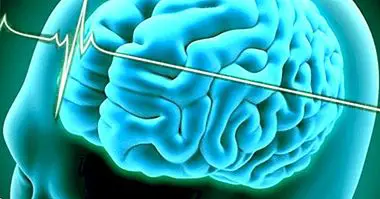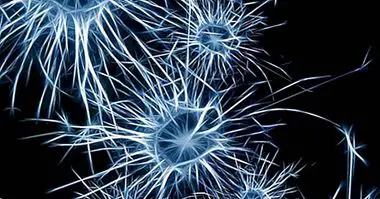The 8 types of speech disorders
Practically all the acts that we carry out are communicative. Gestures, grimaces, sounds, smells and even distances are and have always been used to obtain information about the actions, motivations and thoughts of others.
Even the absence of action is indicative of something. However, in addition to the above, the human being has one more element to communicate, a symbolic one. This symbolic element is the language, which at the oral level is expressed through speech .
Speech or oral language is one of the most fundamental means of communication and connection for the human being. This ability develops throughout the life cycle, from issuing simple holofrases or single words with intentionality to be able to build elaborations as complex as a Shakespeare play.
However, in many people the development of this capacity or its normal functioning can be delayed or altered due to multiple causes. These alterations of oral communication have been studied by sciences such as psychology and medicine, and from them different types of speech disorders have been conceptualized . And no, dyslexia is not one of them, since it only sticks to reading problems.
When language fails: speech disorders
Communicating is fundamental for the development of the human being. And a large part of our communicative capacity depends, as we have said, on speech.
But nevertheless, speech is not something that comes on suddenly (although some authors like Noam Chomsky became famous for defending that we have innate structures that allow the development of this ability), but it has to be learned and developed. Language in general is a complex element that we will ideally acquire and consolidate throughout our physical and cognitive maturation.
Some of the elements that we have to acquire and improve are articulatory ability, fluency and comprehension of speech, vocabulary and ability to find words, grammar and syntax , and even when and how we should communicate certain things in a certain way.
Although these milestones are generally acquired in certain evolutionary moments, in some subjects problems, deteriorations or bad developments of the understanding and expression of the language appear that limit the correct functioning and / or socio-emotional evolution of the individual.
Let's see below some of the most common.
1. Language disorder or dysphasia
This disorder implies the presence of a disability in the understanding and expression of language in children with a level of intelligence appropriate to their level of development, not only orally, but also also in other facets such as written language or reading .
The language disorder or dysphasia can be evolutionary, in which case it could not be a consequence of other disorders, or acquired being in the latter case the product of some type of brain accident, seizure disorders or traumatic brain injuries.
In either case, the child or child may have problems in expressive or receptive language, that is, the problem may occur at the level of defects in the transmission of language or in its comprehension. Children with this disorder usually have a limited vocabulary and limited grammatical structure which causes the discourse to be inferior and more limited than expected.
In the case of acquired dysphasia, the effects would be equivalent to those of an aphasia in adult subjects, although with the particularity that the greater cerebral plasticity during the development stage usually allows the appearance of language even when there is neuronal damage.
2. Phonological disorder or dyslalia
Another of the main oral language disorders is dyslalia. It is understood as such those disorders in which there are different errors in the articulation of words, the most frequent being substitution of sounds, distortions of the correct ones or lack (omission) or addition (insertion) of these . For example, a problem in the form of the tongue can produce dyslalia.
Although it is common that there are such problems in childhood, to be considered dislalia the errors committed must be inappropriate to the level of development of the infant, interfering with social and academic performance.
3. Dysphemia, stuttering, or fluency disorder of childhood onset
Dysphemia is a disorder widely known by society as a whole, although we usually refer to it as stuttering. Is about a disorder focused on the execution of speech, specifically in its fluency and rhythm . During the speech emission the person suffering from it suffers one or several spasms or blockages that interrupt the normal rhythm of communication.
The disfemia is usually lived with shame and anxiety (which in turn worsens the execution) and makes communication and social adaptation difficult. This problem only appears when talking to someone, being able to speak normally in complete solitude , and it is not due to brain or perceptual injuries.
Dysfemic disorder usually begins between three and eight years of age. This is because at this age the normal speech pattern begins to be acquired. Several subtypes of dysphemia can be found depending on their duration: evolutive type (lasts a few months), benign (lasts a few years) or persistent (the latter being the chronicle that can be observed in adults).
4. Dysarthria
The speech disorder known as dysarthria refers to the difficulty in articulating words due to a neurological problem that causes the mouth and the muscles that emit the speech do not present the due muscle tone and therefore do not respond correctly. Thus, the problem is not so much in the muscle tissues (although these also suffer in the long run due to its misuse) but in the way in which the nerves connect with them. It is one of the most known types of speech disorders.
5. Social communication disorder (pragmatic)
In this disorder we do not encounter problems either when articulating or understanding the literal content of the message that is transmitted. However, those who suffer suffer a great difficulty, and that this disorder is based on the presence of severe difficulties in the practical use of language.
Those who suffer from this disorder have problems to adapt the communication to the context in which they are, as well as to understand the metaphorical meaning or implicit of what is said and even to change the way of explaining something, regulate the conversation with other elements such as gestures or respect the turns of the word.
6. Dysglossia
Like dysarthria, dysglossia is a disorder that causes a severe difficulty in the articulation of the sounds that make up speech . In this case, however, the problem is found in the presence of alterations in the own organophonatory organs such as congenital malformations. So, here already there are easily identifiable faults in the morphology of well-defined body parts.
7. Taquifemia or sputtering
It is a speech disorder characterized by a speech exaggeratedly fast, missing words along the way and making mistakes. It is common in people with a very excited mood, including cases in which the subject is in a manic episode or as a result of consumption of excitatory substances. However, it can also occur during childhood without the need for external alteration.
8. Aphasias
One of the most well-known and studied groups of disorders referring to language is that of aphasias. We understand aphasia that loss or alteration of language in adult subjects (in children we would be facing the aforementioned dysphasias) due to the presence of a brain alteration or injury. Depending on the location or damaged brain structure, the effects on the language will be different, allowing its study to find different types.
Types of aphasias
Although we can find different classifications such as Luria or Jakobson, the most known and used classification takes into account the presence of verbal fluency, verbal comprehension and repetition capacity in different types of injuries.
- Broca's aphasia: Characterized by causing a high difficulty to produce language and express themselves, but maintaining a good level of understanding. However, people with this type of aphasia usually are not able to repeat what they are told. It is mainly due to an injury or isolation of Broca's area.
- Transcortical motor aphasia: As in Broca's aphasia, there is a difficulty in emitting a fluid and coherent language while the understanding of language is maintained. The big difference is that in this case the subject is able to repeat (and with a good level of fluency) what is said. It is caused by a lesion in the pars triangularis, a region close to Broca's area and connected to it.
- Wernicke's aphasia: In this aphasia the patient shows a high level of fluency in the language, although what he says may not have great meaning. The main characteristic of this aphasia is that it causes severe difficulties to understand the auditory information, which in turn causes it to be unable to repeat the information coming from outside. The brain injury would be in Wernicke's area. In patients with schizophrenia who have involvement in language, it is common to find alterations similar to those of this aphasia.
- Transcortical sensory aphasia: Provoked by lesions in the area that joins the temporal, parietal and occipital lobes, this aphasia is similar to that of Wernicke except for the detail that the repetition is preserved.
- Driving aphasia: The areas of Broca and Wernicke are connected to each other by a bundle of nerve fibers called the arcuate fasciculus.In this case, both verbal expression and comprehension are relatively correct, but repetition would be very prejudiced. We must bear in mind that in order to repeat something first we have to understand what comes to us and then re-express it, so if the connection between both areas The repetition is impaired.
- Global aphasia: This type of aphasia is due to a massive damage of the hemisphere specialized in language. All aspects of language would be severely impaired.
- Mixed transcortical aphasia: Damage to the temporal and parietal lobes can cause a severe deficit in almost all aspects of language. Basically there is an isolation of the language, affecting expression and comprehension, although the repetition is maintained and it is even possible that the person is able to finish sentences.
- Maybe you're interested: "Aphasias: the main language disorders"
Bibliographic references:
- American Psychiatric Association. (2013). Diagnostic and Statistical Manual of Mental Disorders. Fifth edition. DSM-V. Masson, Barcelona.
- Belloch, Sandín and Ramos (2008). Manual of Psychopathology. Madrid. McGraw-Hill. (Vol 1 and 2) Revised edition.
- Santos, J.L. (2012). Psychopathology. CEDE Preparation Manual PIR, 01. CEDE: Madrid.



















